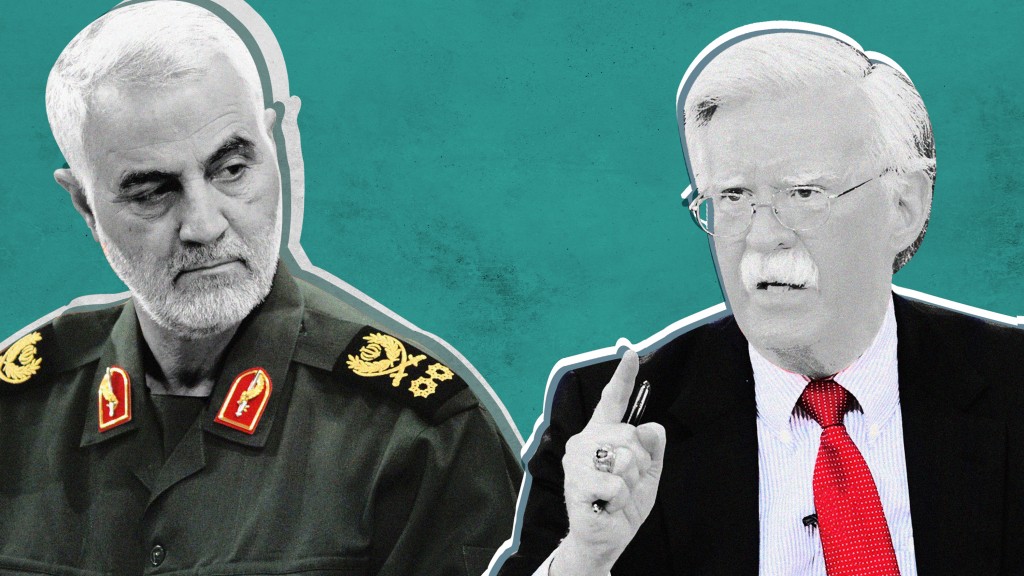US-Iran Tensions
Magazine Desk
American officials have suddenly raised the stakes in the long-simmering tensions between the United States and Iran, pointing to new intelligence that they say suggests an imminent threat to American interests in the Middle East. Although the potential for armed conflict between the two countries has loomed since the Islamic Revolution, the recent American assertion that Iran poses an immediate threat has raised fears that the two nations have pushed closer to the brink.
President Donald Trump’s order of a US military buildup in the Gulf to counter alleged threats by Iran has many worried about a looming war and others sceptical of Washington’s motivations.
Here’s what has happened:
Deployment of aircraft carrier
On May 5, Trump’s hawkish National Security Advisor John Bolton announced the deployment of the USS Abraham Lincoln aircraft carrier strike group and a B-52 bomber force to the Gulf. Days later, the Pentagon added a Patriot missile defence battery and an amphibious assault ship to the deployment. Bolton said the aircraft carrier and bomber deployments were “in response to a number of troubling and escalatory indications and warnings.”
Response from Iran
Iran has not made any direct public threats to spark the US deployment. Washington says it acted on intelligence reports of Iranian actions. Analysts in Washington suspect that Iran’s Islamic Revolutionary Guard Corps could have been plotting an attack in retaliation for the US declaring it a terrorist organisation in April. Iran subsequently designated all US troops as “terrorists,” effectively making them a potential target.
Have there been any incidents?
 One. On May 13, Saudi and United Arab Emirates officials said three oil tankers and a barge anchored at Fujairah near the strategically important entrance to the Gulf were damaged in an alleged “sabotage” operation. But what caused the relatively minor damage to the vessels and who was behind it remains unknown. However, US officials believe Iran encouraged Al Houthi militants or Iraq-based Shiite militias to carry out Sunday’s attacks on four tankers near the Strait of Hormuz, two US government sources said on Wednesday.
One. On May 13, Saudi and United Arab Emirates officials said three oil tankers and a barge anchored at Fujairah near the strategically important entrance to the Gulf were damaged in an alleged “sabotage” operation. But what caused the relatively minor damage to the vessels and who was behind it remains unknown. However, US officials believe Iran encouraged Al Houthi militants or Iraq-based Shiite militias to carry out Sunday’s attacks on four tankers near the Strait of Hormuz, two US government sources said on Wednesday.
Iran rejects the allegation of Iranian involvement and Iranian Foreign Minister Mohammad Javad Zarif has said that “extremist individuals” in the US government were pursuing dangerous policies. No one has claimed responsibility for the tanker attacks.
Is a war imminent?
There are two competing narratives.
The first, which is favoured by US President Donald Trump’s administration, is that Iran is up to no good. Preparations are said to have been seen for a potential attack on US targets, though few details have been revealed publicly.
The second narrative lays the blame for this crisis squarely at Washington’s door.
Iran – not surprisingly – holds to this view, but so too do many domestic critics of the Trump administration’s approach.
Indeed, to varying degrees many of Mr Trump’s key European allies share some of these concerns.
According to this narrative, the “Iran hawks” in the Trump administration – people like National Security Adviser John Bolton, or Secretary of State Mike Pompeo – sense an opportunity.
Their goal, this narrative argues, is regime change in Tehran. And if maximum economic pressure does not work then they believe, military action is not ruled out in the appropriate circumstances.
 Jahangir's World Times First Comprehensive Magazine for students/teachers of competitive exams and general readers as well.
Jahangir's World Times First Comprehensive Magazine for students/teachers of competitive exams and general readers as well.



